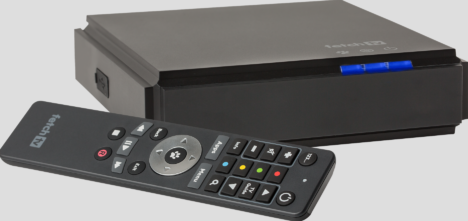Foxtel killer? Will Fetch TV’s low-priced entry devices be a game-changer on IPTV penetration?
Last week Fetch TV launched a cheaper IPTV device in competition with Telstra. Does this mean Australia is approaching a tipping point in consumer awareness and penetration when it comes to internet enabled television?
On Wednesday evening, Fetch TV held a small media event at Ivy in Sydney to announce a number of key product and distribution deals.
 In many ways the Optus, iiNet and Dodo-aligned IPTV platform Fetch TV has flown somewhat below the radar, especially when you compare it with rivals Telstra and Foxtel, but one of its announcements, the launch of its $149 Mini device, is actually part of a major shift in the TV landscape.
In many ways the Optus, iiNet and Dodo-aligned IPTV platform Fetch TV has flown somewhat below the radar, especially when you compare it with rivals Telstra and Foxtel, but one of its announcements, the launch of its $149 Mini device, is actually part of a major shift in the TV landscape.
The Fetch TV Mini, just like its rival the Telstra TV Roku2 device, is an attempt by the major telcos to capture control of the HDMI1 port of the household television and in the long-term gives these players a key seat in controlling the platform and what streaming products consumers have access to going forward.



Awesome overview – thanks Nic. The next 12months will indeed be terraforming in terms of IPTV!
This post should have more comments. Where has the comments section gone..? I want an overview of most commented etc like the old site = increased engagement. – Be great to get an update on this. It will make the site great again. You were a niche social network in a way.
I agree with the above comment – it is going to be interesting and forward thinking progressive companies will dominate. (Foxtel / Murdoch are not forward thinking, so they will lose market share.., due to being far too controlling and conservative: money first models v user first).
Big wins for Google / Amazon / Apple and the companies who embrace G, A and A’s platforms.
(Being able to Chromecast from the Optus app when the EPL is on, is an example of Optus understanding that they must be platform agnostic and enable their punters to utilise the infrastructure that their said punters like to use…)
10 cents over.
the aussie skips can have crappy telstra with its stupid afl nrl and bug ridden faults..optus should give gay cricket to the drop dead pensioners and let us wogs keep real football..dogs and telstra are a great match..its funny aus made company like tel abuses its power yet stupid australians still go with it..yet asian company like optus still does better than and with half the cost..remember kids anything aus made is a failure just ask dicksmith hahaha..afl crickets sucks and fans are hopeless stooges..football rules